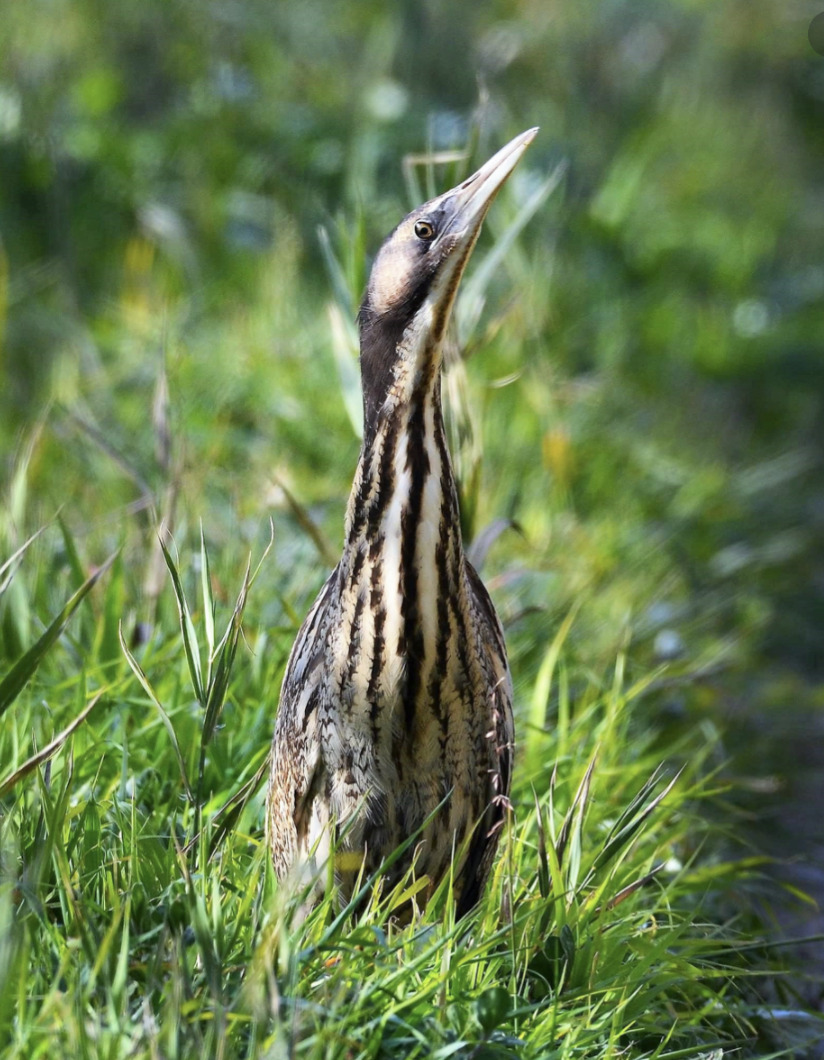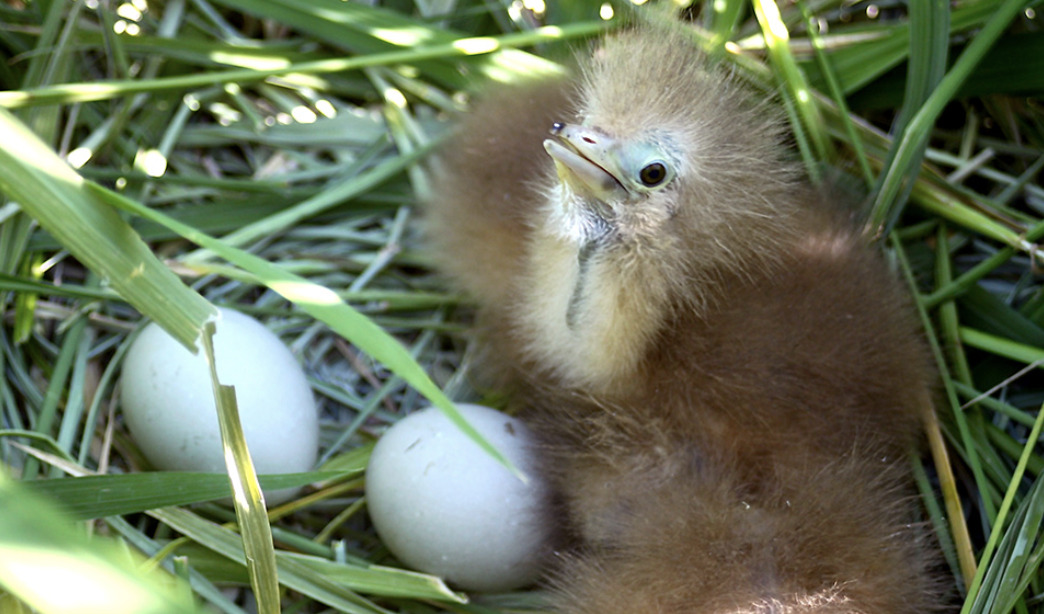The Australasian bittern has effective camouflage plumage. Mainly brown, buff and green, it is tough to distinguish the bird from its environment. The Australiasian bittern inhabits wetlands, swamps, billabongs, riverbeds and waterholes. They favour dense vegetation near the water made of reedbeds, cubungi, lignum and sedges. When alarmed, the Australasian bittern stretches its neck, points its beak towards the sky and remains still, making it look like a water plant and, thus, hard to spot.
The breeding season takes place in summer between October to January. Solitary, Australasian bitterns nest in shallow water or dry areas, often using green reeds. They usually lay up to six olive-brown eggs that hatch seven weeks after an incubation period of 23 days. Occasionally, breeding may occur during flooding events, increasing the chances of spotting the bird after heavy rainfall. Australasian bitterns feed on eels, fish, snails, insects and other small creatures such as crustaceans found within their habitats. It is believed that their call is the origin of the mythical Bunyip, an Aboriginal and colonialist legend about a creature living around swamps, billabongs and waterways.
Sadly, the Australasian bittern is classified as endangered. There is an urgent need for a recovery plan. However, the bird’s distribution across several states makes it difficult in terms of policies. Multiple factors threaten the bird:
- intensive drainage;
- habitat degradation;
- herbicides and chemicals;
- predation by cats, foxes and pigs;
- climate change and the resulting changes in seasonality.
Birdlife Australia has played an essential role in assessing the Australasian bitterns status. Check out their website to listen to the eerie call of Australasian bitterns and follow their project.
https://birdlife.org.au/projects/bittern-project
Passionate or novice bird watchers, grab your binoculars and go to the closest wetlands to try to spot the rare Australian bittern. Your contribution is essential, and any sighting will help in the conservation effort!
You can download the free Birdata app and report your sighting: https://birdata.birdlife.org.au/

Retrieved from Bird SA (credit: John Gitsham)

Retrieved from Wikipedia (J.G.Keulemans in Buller, Walter Lawry, A History of the Birds of New Zealand, 1888. – nzbirds.com)

Photo of a bittern chick – Retrieved from Australian Geographic (credit: Matt Herring)

